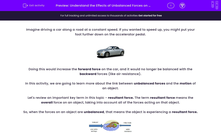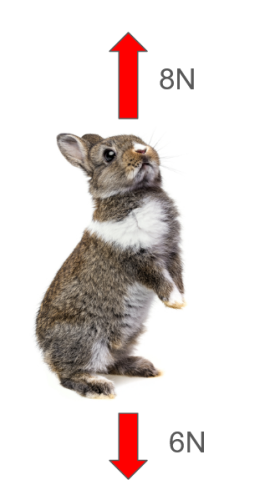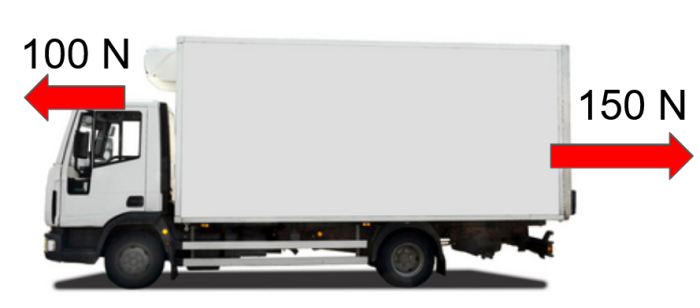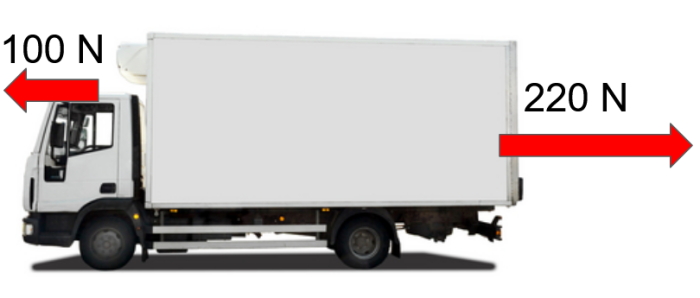Imagine driving a car along a road at a constant speed. If you wanted to speed up, you might put your foot further down on the accelerator pedal.
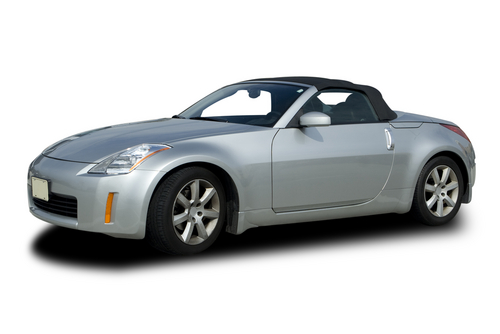
Doing this would increase the forward force on the car, and it would no longer be balanced with the backward forces (like air resistance).
In this activity, we are going to learn more about the link between unbalanced forces and the motion of an object.
Let's review an important key term in this topic - resultant force. The term resultant force means the overall force on an object, taking into account all of the forces acting on that object.
So, when the forces on an object are unbalanced, that means the object is experiencing a resultant force.

In the example above, we can see that two forces are acting on the swimmer. The forces are unbalanced - the thrust is greater than the friction.
So, how does a resultant force, or unbalanced force, affect an object?
A resultant force, or unbalanced force, on an object, causes the object to change its motion.
In this example, a rabbit is jumping up. It has an upward force of 8 Newtons and a downward force of 6 Newtons. The resultant force is the difference between these values: 2 Newtons upwards.
The rabbit has a resultant force acting on it, which will change its motion. In this case, the rabbit will accelerate (get faster) in its jump upwards.
A resultant force in the direction of movement will cause acceleration.
Let's try another example. What is the resultant force on the truck?
The resultant force on this truck is 50 Newtons, acting backwards. How will this affect the motion of the truck?
The truck will decelerate (slow down) because of the resultant force in the backwards direction.
A resultant force acting against the direction of movement will cause deceleration.
Let's imagine that the same truck has to slow down because of an obstacle. The image below shows the forces acting on the truck now.
This time, the resultant force is still backwards, but it is 120 Newtons - greater than it was before. How will this affect the motion of the truck?
The truck will decelerate, just like before. However, because the resultant force is greater, the truck will have a greater deceleration (the truck will slow down even more rapidly than before).
Now that we have seen some unbalanced forces in action, let's try some practice questions!

